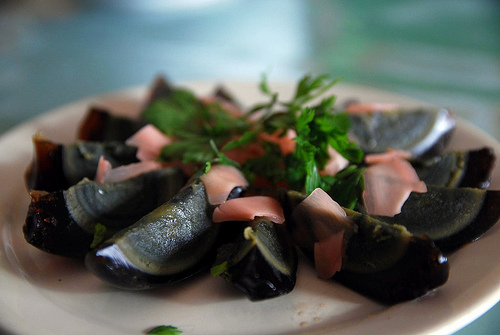
China : Century Eggs
Century eggs, also known as 100-year-old eggs and millenium eggs, are a Chinese delicacy popular for hundreds of year. These outlandish ova made by soaking eggs in a mixture of lime (the mineral kind), ashes, and salt, wrapping them in rice husks and then allowing the eggs to cure for, not years or decades or centuries, just 4 to 5 weeks. The high pH of the treatment breaks down some of the proteins in the egg so that the yolk turns green and acquires complex, and we can fairly say, inimitable flavors, while the white turns creamy and gelatinous. Not usually available on your local Chinese restaurant buffet, century eggs are a must-try on your next trip to China.
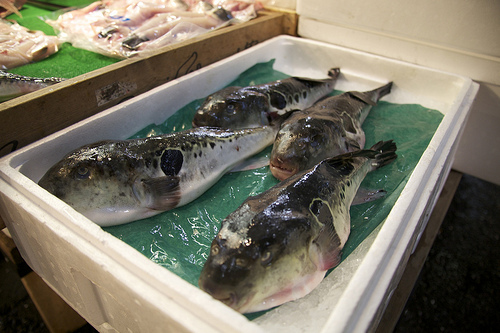
Japan : Fugu
Fugu, a Japanese fish also known as pufferfish whose name literaly means "river pig," is the famous dangerous delicacy of Japan. One of several ocean fish that contain a dangerous tetrodotoxin, eating the wrong parts of the fish (especially the liver and the ovaries of the female fish) can cause death from paralysis over long agonizing hours, although in actuality most fugu poisoning victims recover if promptly hospitalized. Because the toxin does not cross the blood-brain barrier, it leaves an untreated victim fully conscious as death occurs through paralysis of the muscles. Other parts of the fish, however, contain just enough of the toxin to cause unique stimulation of the tastebuds. Only chefs who have been specially trained in the preparation of the fish are allowed to serve it in Japan. Home chefs preparing the especially tasty--and especially deadly--fugu liver sometimes die from tetrodotoxin nerve poisoning.
- Important notification about information and brand names used in this slideshow!
- Photo courtesy of Jeff Carpenter by Flickr : www.flickr.com/photos/magicarp/6777424663/
- Onishi, Norimitsu (2008-05-04). "If the Fish Liver Can't Kill, Is It Really a Delicacy?". The New York Times
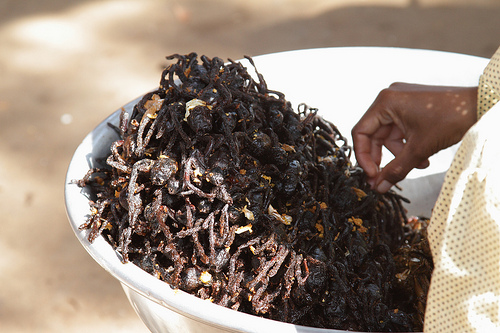
Cambodia : Fried Spiders
Fried spiders are considered a delicacy in Cambodia, especially in the town of Skuon, about 75 km (50 mi) from the Cambodian capital Phnom Pehn. The spiders are bred in holes in the ground by villagers living near Skuon, or foraged from the forests. The spiders used for frying are a species of tarantula about the size of the human palm. They are fried in a mixture of oil, sugar, salt, and MSG until the legs are stiff, at which point the contents of the abdomen are no longer runny (if the diner is lucky). Eating fried spiders is a relatively new innovation in Cambodian cuisine. It probably originated during a period of mass starvation during the rule of the Khmer Rouge in the 1970's.
- Important notification about information and brand names used in this slideshow!
- Photo courtesy of Harald Hoyer by Flickr : www.flickr.com/photos/hhoyer/4279360359/
- ABC News Online (2 September 2002). "Spiderwomen serve up Cambodia's creepy caviar.

Korea : Sannakji
Do you like your seafood really, really fresh? Then you might like sannakji, the Korean dish composed of live octopus cut into small pieces and served immediately. The bits of raw octopus are usually still squirming on the plate, and the suction cups of the octopus can pose a choking hazard if they are not eaten carefully. Strangulation by the live octopus is rare, and it usually occurs to people who are inebriated when they eat the dish. Usually sannakji is served in restaurants that specialize in serving sliced raw fish, but it is also served in bars as a snack food to accompany alcoholic beverages such as soju.
- Important notification about information and brand names used in this slideshow!
- Photo courtesy of LWY by Flickr : www.flickr.com/photos/lwy/2148450847/
- Yonhap News 2008-01-21 광주서 산낙지 먹다 기도막힌 사고 잇따라.

Mexico : Escamoles
Escamoles are ant eggs, harvested from the roots of the agave (tequila) plant. The black ants that lay the eggs harvested as escamoles are not tiny, friendly ants. They are giant, aggressive ants who defend their bean-sized eggs and larvae that become this Mexican delicacy. Escamole are usually cooked like scrambled eggs, seasoned with ajo (garlic), pepper, and salt, and served on tortillas with avocado slices or guacamole. Some cooks add fried grasshoppers for crunch. Ant eggs are a source of complete caviar, and while they are available for free for adventurous eaters willing to do a little work and to endure a few stings in Mexico, when they are sold as "insect caviar" outside of Mexico they are usually quite expensive.
- Important notification about information and brand names used in this slideshow!
- Photo courtesy of Julian by Flickr : www.flickr.com/photos/djjewelz/5750880349/
- Always Foodie. Home / Cuisines / Adventurous Food: Escamole, Mexican delicacy made with giant black ant eggs. http://www.alwaysfoodie.com/adventurous-food-escamole-mexican-delicacy-giant-black-ant-eggs.html. Accessed 24 January 2014.
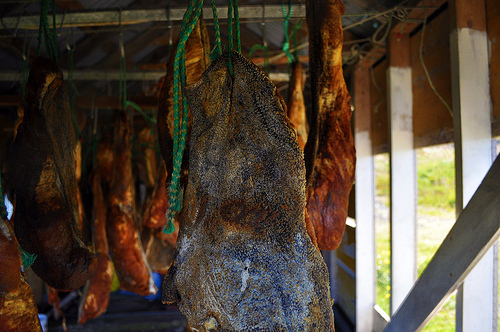
Iceland : Hakarl
Just a whiff a some traditional foods can bring tears to your eyes. Even if you don't grow sentimental about Icelandic food, tears can some to you eyes when you smell hakarl. Hakarl or kæstur hákarl (Icelandic for "shark") is a food from Iceland consisting of a sleeper shark or Greenland shark that has been fermented by burying in sand and then dug up and hung to dry for four to five months. It has a pungent ammonia odor and a distinctively fishy taste. Rotten shark is actually preferred to fresh shark because these species contain toxic amounts of urea and nitrates before they are cured. Most non-Icelanders note a severe aftertaste and some refer to it as the nastiest food they have ever eaten.
- Important notification about information and brand names used in this slideshow!
- Photo courtesy of Troy by Flickr : www.flickr.com/photos/memnativ/6029236652/
- Yuen, D. The Mystery of Hakarl: Rotten Shark Meat Delicacy From Iceland, An Icelandic Treat. Yahoo Voices. http://voices.yahoo.com/the-mystery-hakarl-rotten-shark-meat-delicacy-from-617158.html?cat=16. Accessed 24 January 2014.
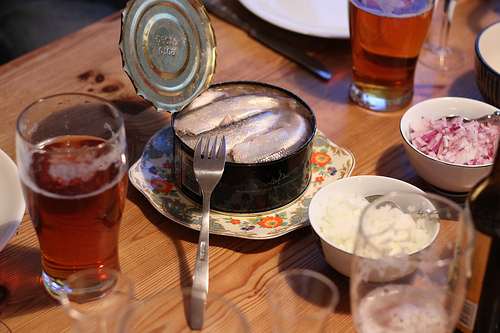
Sweden : Soured Herring
Swedish soured herring, or surströmming, are a staple food of northern Sweden. Made from Baltic Sea herring caught just before spawning time. The fish are allowed simply to rot, whole, with a little of the briny water in which they are caught. The salt in the seawater kills pathogenic bacteria, but allows decay bacteria to work with an enzyme in the fish itself that causes it to dissolve in a mass of acetic acid (a natural vinegar), butyric acid (the acid found in rotten butter), and hydrogen sulfide (rotten egg smell). At one time, Swedish soured herring producers lobbied the King for a förordning, a royal decree, that no soured herring should be sold before it was fully rotten, but nowadays producers simply agree that each spring's catch should be allowed to rot to the third Thursday in August before it is offered on the market. The fish is so smelly it is traditionally eaten outdoors, and because the hydrogen sulfide in the finished product is explosive, it is forbidden on Scandinavian airlines.
- Important notification about information and brand names used in this slideshow!
- Photo courtesy of Johan Andersson by Flickr : www.flickr.com/photos/49204381@N05/4981840380/
- Swedish fermented herring dish considered safety risk on airlines, fishupdate.com, 28 March 2006.
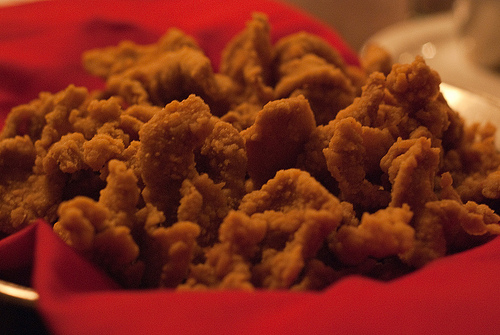
USA : Rocky Mountain Oysters
Despite the implication of the name, Rocky Mountain oysters, a food eaten in the USA, are not found in salty seas of Colorado. Rocky mountain oysters are actually beef testicles. They are usually peeled, pounded flat, breaded, floured, and served as an appetizer with a dipping sauce in the US, but roasted and served with a demi-glace in Canada. Not to be confused with "lamb fries," Rocky Mountain oysters are popular throughout the Americas, although they are known by various euphemistic names in different locations. In Oklahoma and Texas, the results of castrating young bovine males is served as "calf fries." These are also served in Argentina as "criadillas." In Mexico the dish is known as "huevos del toro," literally, eggs of the bull, and in some other locations in the Americas it is simply listed as "low hanging fruit."
- Important notification about information and brand names used in this slideshow!
- Photo courtesy of jan go by Flickr : www.flickr.com/photos/liljango/5341067630/
- Stradley, S. Deep End Dining. Rocky Mountain Oysters - The Old Mill. Cedar City, Utah. http://www.deependdining.com/2004/09/rocky-mountain-oysters-old-mill-cedar.html. Accessed 24 January 2014.
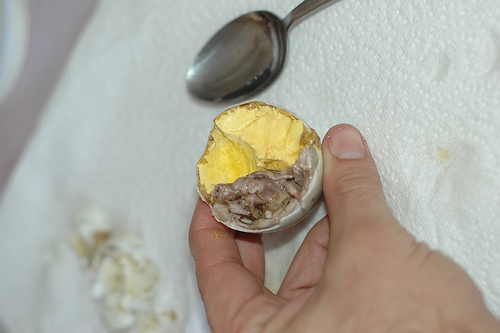
Philippines : Balut
A favorite street food in the Philippines, a balut or balot is a duck embryo boiled alive in its egg and eaten whole from the shell. The balut may or may not have feathers by the time it is eaten whole. Cooked in a broth of chili, garlic, and vinegar, the embryo is eaten whole before the egg white and broth are sipped from the shell. Balut are a popular snack for children, and they are also served as bar food, usually to accompany beer. Many Western visitors are only willing to sample this delicacy after the help of copious amounts of alcohol.
- Important notification about information and brand names used in this slideshow!
- Photo courtesy of Marshall Astor by Flickr : www.flickr.com/photos/lifeontheedge/1559649272/
- Wiki-how. multiple editors. How to Eat Balut in Five steps. http://www.wikihow.com/Eat-Balut. Accessed 24 January 2014.
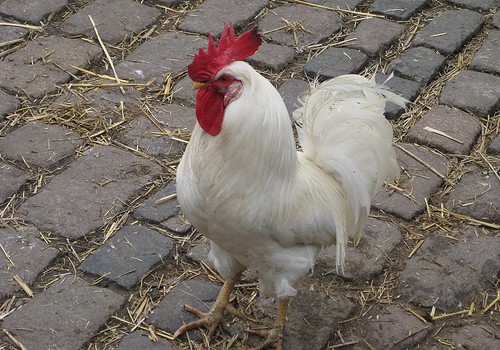
Italy, France : Cockscombs
If you have ever seen a Warner Brothers cartoon featuring the character Foghorn Leghorn, you have seen a prominent, although fictional, example of a rooster's distinctive red comb, also known as a cockscomb. The comb is also found on the top of the head of the males of some other commonly eaten birds such as turkeys and pheasants. The comb is cleaned as used as a decoration in some French dishes, or it can be chopped up and used as a component in sauces, to which they contribute a smooth, gelatinous texture and depth of flavor. Cockscomb is used to make the traditional Italian dish cimabella con cibreo, which combines it with chicken livers and eggs in a sauce over tagliatelle served in a ring made of potatoes and ricotta cheese.
- Important notification about information and brand names used in this slideshow!
- Photo courtesy of Jeppestown by Flickr : www.flickr.com/photos/jeppestown/3452235965/
- Eat Me Daily, Offal of the Week: Cockscomb, Chitterlings. http://www.eatmedaily.com/2009/08/offal-of-the-week-cockscombs-and-chitterlings. Accessed 24 January 2014.



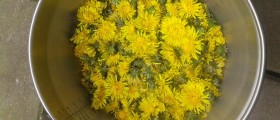

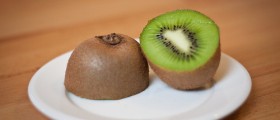




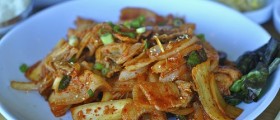


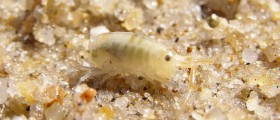

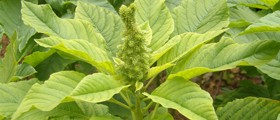

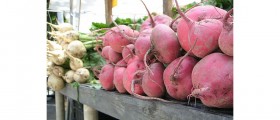
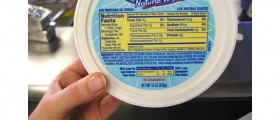



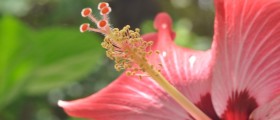




Your thoughts on this
Loading...